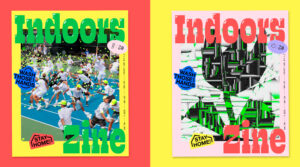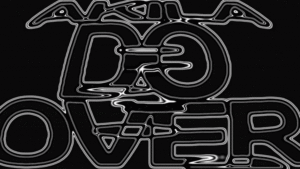What A Woman is a project aiming to showcase great women engaged in causes which help to make our world better. Created by Brazilian graphic designer and 3D artist Nayani Teixeira (@naycreator) the project sparked from her desire to use design to engage politically and socially with causes which personally resonate with her.

‘My goal is to impact people through the visual narrative I create’, Nayani expands. ‘It’s not something that will change the world and it’s not something with extensive communication, extensive texts or anything like that. It is a communication with typography, images, textures and strong colours that say “hey, look at these women, they are incredible, research more about them and get inspired”… It’s aimed at anyone, but mainly women and girls who are growing up and need references in their lives’.


What A Woman currently exists in two editions created entirely by Nayani, who explains she may expand the project into a collaborative endeavour in future editions. Nayani’s typographic choices throughout What A Woman are powerful, femme and take up maximum space in most of the layouts. We were curious to ask Nayani more about her typographic choices and the role type played in communicating her messages.

‘The typographic choice is always a very delicate part of any visual project and I consider it a challenge’, Nayani tells us. ‘One must be careful when choosing because it is like the lungs of the project in my opinion… In the first edition, the idea was to work with a more handwritten typography with a brush style with the intention to bring a more relaxed communication, without too much formality or rules; you can see this not only in the types, but also in the layout and elements.’

‘For the second project, the idea was to bring a more formal and imposing feel to the communication. I worked with a more condensed typography that shows strength, which was used for the main phrases of the project, which are phrases of empowerment. In addition, I also worked on a serif typography to have a greater connection with the statues of the project… I thought a sans serif wouldn’t make as much sense. You can see that the projects have different looks, but the same essence is still there. It changes and adapts to trends and what it wants to communicate – starting in a sweeter “girly” way and then going to a more imposing feminine presence that seeks out its goal unapologetically.’


Nayani strongly believes design is a unique tool to amplify the voices of those in need of recognition and to create new social narratives. ‘More and more I see people using design in favour of what they believe in and that is beautiful and inspiring’, the designer tells us. ‘We cannot shut up and bow our heads. If we believe in something we have to express it through what we know and share how we can do better. I think much of the female audience is very visual and aesthetic, so sometimes a post with an impactful phrase and an attractive look can make you stop scrolling and go and read here what is written in the caption – or at least reflect. It is better than a lot of text delivered without any visuals… Images speak and design helps to build these narratives. That’s how we should use this tool.’


However, Nayani also felt it was important to highlight that we need to push new narratives through design to reach beyond online spaces. ‘I think we need more communication to reach people beyond the internet’, she says. ‘I don’t know exactly how, but design can go beyond posting on the internet. It’s necessary to find an effective way because many women do not have access to these resources and are suffering, whether physically, psychologically or in other ways. We need to take design to further – whether through books, letters or any other graphic material – to reach a wider scope of people.’


We’ve loved learning more about the impactful narratives and typographic choices behind What A Woman. Nayani’s sentiment that design needs to find new ways of reaching new audiences feels incredibly poignant and true. As Nayani notes, ‘design has the power of conscience, of politicisation and of showing important causes, it just needs to be used in the right way. Sometimes a visual speaks more than many words, I believe that’. To see more of Nayani’s work and stay up to date with the developments of the next edition of What A Woman, check out her website and Behance, and be sure to follow her on Instagram.








